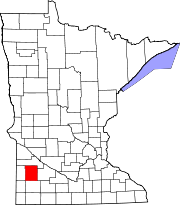
East Bethel is a city in Anoka County, Minnesota, United States. The population was 11,786 at the 2020 census.

Mapleton is a city in Blue Earth County, Minnesota, United States. The population was 1,710 at the 2020 census. It is part of the Mankato-North Mankato Metropolitan Statistical Area.

Deerwood is a city in Crow Wing County, Minnesota, United States. The population was 526 at the 2020 census. It is part of the Brainerd Micropolitan Statistical Area.
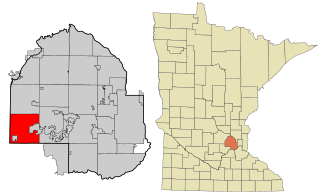
Minnetrista is a city in Hennepin County, Minnesota, United States. Largely rural, Minnetrista has agricultural activity involving corn, soybeans, hay and horses. In addition to farmland and woods, the city is home to several lakes, including part of Lake Minnetonka, the state's ninth-biggest.

Keewatin is a city in Itasca County, Minnesota, United States. The population was 1,068 at the 2010 census.

Lakefield is a city in Jackson County, Minnesota, United States. The population was 1,694 at the 2010 census.
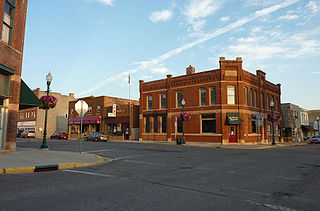
Le Center is a city in Le Sueur County, Minnesota, United States. The population was 2,517 at the 2020 census. It is the county seat of Le Sueur County. The Le Sueur County Courthouse and Jail are listed on the National Register of Historic Places.
Lynd Township is a township in Lyon County, Minnesota, United States. The population was 471 at the 2000 census.

Plato is a city in eastern McLeod County, Minnesota, United States. The population was 320 at the 2010 census.
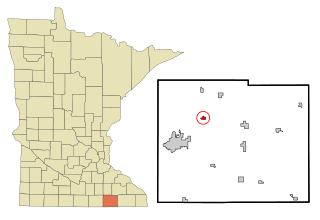
Brownsdale is a city in Red Rock Township, Mower County, Minnesota, United States. The population was 676 at the 2010 census.
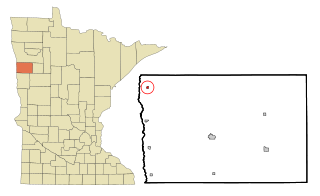
Shelly is a city in Norman County, Minnesota, United States. The population was 179 at the 2020 census.

Bluffton is a city in Otter Tail County, Minnesota, United States, along the Leaf River. The population was 210 at the 2020 census.

Gully is a city in Polk County, Minnesota, United States. It is part of the Grand Forks-ND-MN Metropolitan Statistical Area. The population was 59 at the 2020 census.

McIntosh is a city in Polk County, Minnesota, United States. It is part of the Grand Forks, ND-MN Metropolitan Statistical Area. The population was 606 at the 2020 census.

Fairfax is a city in Renville County, Minnesota, United States. The population was 1,235 at the 2010 census.

Gilbert is a city in St. Louis County, Minnesota, United States. The population was 1,799 at the 2010 census. State Highway 37 and State Highway 135 are two of the main routes in Gilbert. Gilbert is part of the Quad Cities, with Virginia, Eveleth, and Mountain Iron. The city is named for Giles Gilbert, who led the exploration of the McKinley mine property in the 1890s.

Bertha is a city in Todd County, Minnesota, United States. The population was 497 at the 2010 census.

Maple Lake is a city in Wright County, Minnesota, United States. The population was 2,159 at the 2020 census. Minnesota State Highway 55 serves as a main route in the city.

Battle Lake is a city in Otter Tail County, Minnesota, United States. The population was 857 according to the 2020 census.

Ormsby is a city in Martin and Watonwan counties in the U.S. state of Minnesota. The population was 131 at the 2010 census.




















